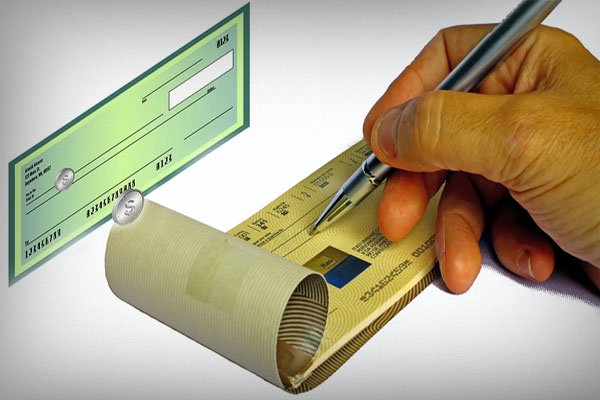Business
Business Tips & Info
Cheques
A cheque or check is a negotiable instrument which is instructing a financial institution to pay a specific amount of a specific currency from a specified demand account held in the maker's or depositor's name with that institution.
ADVANTAGES:
 Reduced risks of robbery.
Reduced risks of robbery.
 They usually boost sales, because buyers are not limited by amount.
They usually boost sales, because buyers are not limited by amount.
 Some buyers like paying by cheque because they have a record of their payments.
Some buyers like paying by cheque because they have a record of their payments.
DISADVANTAGES:
 Risk of getting paid by bad cheque.
Risk of getting paid by bad cheque.
 Risk of fraud and identity teft.
Risk of fraud and identity teft.
 Risk of non-suficient funds in the issuer's account to cover the cheque.
Risk of non-suficient funds in the issuer's account to cover the cheque.
 Handling cheques is time consuming.
Handling cheques is time consuming.
 Cheque cashing services are costly.
Cheque cashing services are costly.
NOTE: Since cheques include significant personal information (name, account number, signature and in some countries driver's license number, the address and sometimes even phone number of the account holder), they can be used for fraud, specifically identity theft.
CHEQUE PAYMENT TIPS:
 As a business owner, you'll probably very often pay suppliers by issuing a cheque on your current account. Make sure your bank statement is up to date and keep record of all your payments.
As a business owner, you'll probably very often pay suppliers by issuing a cheque on your current account. Make sure your bank statement is up to date and keep record of all your payments.
 When you send your cheque to your supplier by mail, make sure it reaches its destination by the due date. Check the account and make sure you have funds to cover all your cheques.
When you send your cheque to your supplier by mail, make sure it reaches its destination by the due date. Check the account and make sure you have funds to cover all your cheques.
 If your payment will be late, warn your supplier and send it when promised.
If your payment will be late, warn your supplier and send it when promised.
NOTE: Business owners rarely pay suppliers in cash, but there may be occasions when you pay cash for something. If you pay cash for something, obtain a receipt or you won't be able to claim that expense.
Related Links:
 Protecting Your Product or Service
Protecting Your Product or Service
 Glossary of Business & Financial Terms
Glossary of Business & Financial Terms
Cash Flow Forecast
It is very important to calculate your cash flow. Take time to anticipate when cash will be short, because sales and revenues of business are rarely constant. Some businesses are seasonal, others extend credit to customers etc. Cash flow planning help you to have enough cash to cover all your... Learn more...Did You Know?
Ratio analysis may help you put things in proper business perspective. Financial ratios quantify many aspects of a business and are categorized according to the financial aspect of the business which the ratio measures. They are an integral part of the financial statement analysis.Quick Ratio or Acid Test Ratio, measures how quickly your company can raise cash by selling off its most liquid assets to meet its liabilities. To calculate, subtract inventories from current assets (cash, accounts receivable or any other quick assets) and divide by current liabilities.
Age of Receivables Ratio shows the efficiency of business's collection capatibilities. For example if firm's payment terms are 30 days, and ratio is 55, that long period may show a business's credit policies and collection procedures need attention. However, ratio must be compared with previous years and... Find out more...


